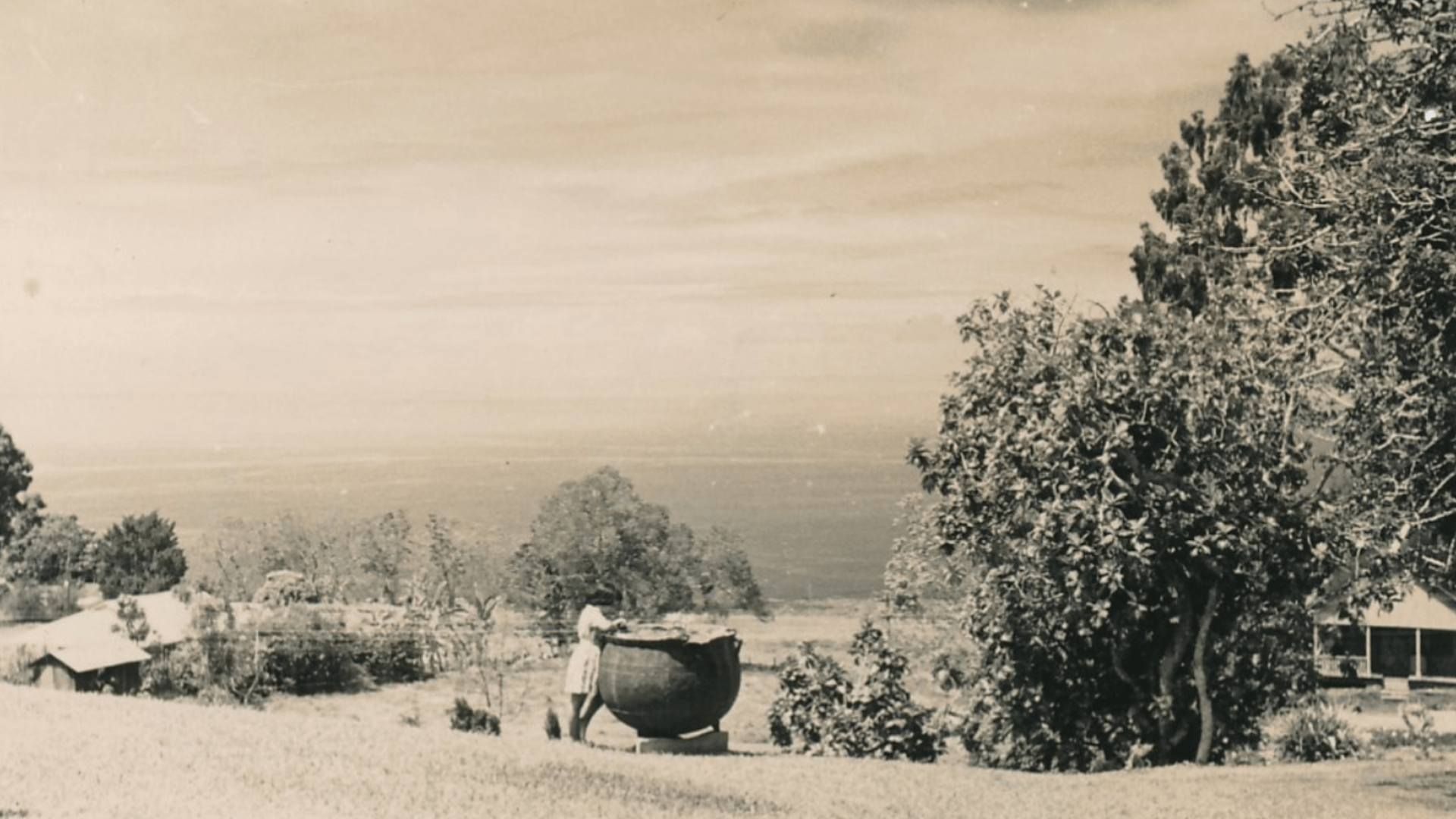Episode 3: All About 100% Kona Coffee Grafting
This month, we addressed a question from the audience! What is Coffee Grafting? Tom answers what it is, its benefits and all about the Greenwell Farms nursery technique. Tune in for this extremely insightful conversation and the way that it is helping rebuild Coffee Leaf disease resistant trees for the Kona Coffee Belt community.
[00:00:05] Matt Carter
I’m Matt. This is Tom Greenwell, our owner and CEO, and welcome to the third installment of Coffee with Tom Greenwell. Cheers.
[00:00:12] Tom Greenwell
Cheers.
[00:00:12] Matt Carter
How are you doing this morning?
[00:00:13] Tom Greenwell
Very good!
[00:00:15] Matt Carter
Good. Now, we had a question from one of our customers about grafting the coffee. And so no better person to ask on the farm than Tom. And so why did we start grafting coffee?
[00:00:26] Tom Greenwell
Well, we have a nematode that attacks the root system of the coffee tree and it eventually will our trees will overproduce and kill itself because it doesn’t have enough root base. So we’re using a rootstock from an Arabica and a Liberica that are resistant to the nematode.
[00:00:52] Matt Carter
I see.
[00:00:53] Tom Greenwell
And what we want is our wonderful tasting coffee that we grow here and we graft that coffee on top of this rootstock.
[00:01:06] Matt Carter
Gotcha.
[00:01:06] Tom Greenwell
The rootstock protects the tree from the nematode and provides actually a lot more nutrients to the plant.
[00:01:16] Matt Carter
Amazing. So I calculated that we grow 11 or 12 varieties of Arabica that upper, if you want to come in I don’t know if you can see that, but that upper green section that we call the scion is what he was talking about, has the really delicious coffee beans. And then that brown portion underneath is the rootstock and you can see how they kind of fuze together. How long does it take for a graph to become stable after you fuze it?
[00:01:42] Tom Greenwell
After we’re done actually gone through the grafting procedure it takes about six months is what I like to see at least minimal.
[00:01:51] Matt Carter
Do you all coffee farms in Kona graph their trees?.
[00:01:54] Tom Greenwell
No, no. It takes a lot of work. It’s expensive but I think it’s well worth the expense. Number one, because we get a much better crop.
[00:02:11] Matt Carter
I see, so higher yield, healthier trees.
[00:02:13] Tom Greenwell
Yeah. Healthier tree means better tasting coffee.
[00:02:16] Matt Carter
Gotcha. Interesting and so we’ve been doing this since about 99′, 2000’s something like that?
[00:02:23] Tom Greenwell
Yeah, we identified the nematod as a big problem here in 98′.
[00:02:29] Matt Carter
98′.
[00:02:30] Tom Greenwell
And about 2002, we were completely converted over to grafted trees here at the farm.
[00:02:37] Matt Carter
I see, now this is seed grafting, right? As opposed to shoot grafting?
[00:02:42] Tom Greenwell
Right. Right. We actually use the seed.
[00:02:45] Matt Carter
I see. So is there a benefit to that? Because the other one is cloning and this necessarily isn’t cloning, is that correct?
[00:02:52] Tom Greenwell
Right. Because when you use a seed, you can have a cross between two different trees and even if they are the same variety. You can get a little different, you get pollinated. But coffee only pollinated about 10% of the seeds. So it’s not a big change. Cloning is probably takes a lot more care. It’s a lot, your losses from the actual grafting is about almost 50%.
[00:03:29] Matt Carter
Wow, so now our nursery manager told me that she has a 96% success rate with her seed grafts. That’s amazing.
[00:03:36] Tom Greenwell
That is. They do a really good job.
[00:03:38] Matt Carter
Wow.
[00:03:39] Tom Greenwell
It takes, it takes time to get to that point.
[00:03:41] Matt Carter
I see.
[00:03:42] Tom Greenwell
Yeah.
[00:03:42] Matt Carter
So what we were talking about a couple of weeks ago that we’re introducing new varieties of coffee to Kona to be leaf rust resistant. We’re still going to use the grafting system, that doesn’t change?
[00:03:55] Tom Greenwell
No, it doesn’t. We absolutely everything will be grafted till we find a variety that’s resistant to nematodes.
[00:04:05] Matt Carter
I see everything.
[00:04:06] Tom Greenwell
That tastes good. So far we haven’t.
[00:04:08] Matt Carter
Now, this is a weird question, but on an annual basis, how many trees are you guys grafting here?
[00:04:15] Tom Greenwell
Well, we’ve been doing about 15,000 trees a year.
[00:04:19] Matt Carter
I see.
[00:04:20] Tom Greenwell
Primarily, it started for us for replacing the farm here. Growing out our new farms. Now we’re grafting trees to help the rest of the farmers in Kona with the rust resistant varieties. As this one here right here is a rust resistant.
[00:04:38] Matt Carter
So we’re kind of ramping up production to to help the belt.
[00:04:42] Tom Greenwell
Yeah.
[00:04:43] Matt Carter
Amazing, that is a lot of work.
[00:04:43] Tom Greenwell
Yeah. Not every farmer can have the time to graft and do that and, you know, and grow. Just trying to help out the community.
[00:04:53] Matt Carter
Amazing. Well, guys, there you have it. Hopefully that answers your question about grafting and until next month. Aloha.
[00:04:59] Tom Greenwell
Cheers.
Watch our previous episodes here:





